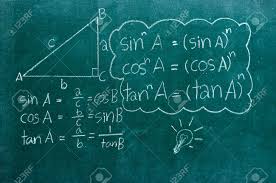
Maths Formulas
- (a + b)(a – b) = a2 – b2
- (a + b + c)2 = a2 + b2 + c2 + 2(ab + bc + ca)
- (a ± b)2 = a2 + b2± 2ab
- (a + b + c + d)2 = a2 + b2 + c2 + d2 + 2(ab + ac + ad + bc + bd + cd)
- (a ± b)3 = a3 ± b3 ± 3ab(a ± b)
- (a ± b)(a2 + b2 m ab) = a3 ± b3
- (a + b + c)(a2 + b2 + c2 -ab – bc – ca) = a3 + b3 + c3 – 3abc =
1/2 (a + b + c)[(a – b)2 + (b – c)2 + (c – a)2]
when a + b + c = 0, a3 + b3 + c3 = 3abc
- (x + a)(x + b) (x + c) = x3 + (a + b + c) x2 + (ab + bc + ac)x + abc
- (x – a)(x – b) (x – c) = x3 – (a + b + c) x2 + (ab + bc + ac)x – abc
- a4 + a2b2 + b4 = (a2 + ab + b2)( a2 – ab + b2)
- a4 + b4 = (a2 – √2ab + b2)( a2 + √2ab + b2)
- an + bn = (a + b) (a n-1 – a n-2 b + a n-3 b2 – a n-4 b3 +…….. + b n-1)
(valid only if n is odd)
- an – bn = (a – b) (a n-1 + a n-2 b + a n-3 b2 + a n-4 b3 +……… + b n-1)
{where n ϵ N)
- (a ± b)2n is always positive while -(a ± b)2n is always negative, for any real values of a and b
- (a – b)2n = (b – a)2” and (a – b)2n+1 = – (b – a)2n+1
- if α and β are the roots of equation ax2 + bx + c = 0, roots of cx” + bx + a = 0 are 1/α and 1/β.
if α and β are the roots of equation ax2 + bx + c = 0, roots of ax2 – bx + c = 0 are -α and -β. - n(n + l)(2n + 1) is always divisible by 6.
- 32n leaves remainder = 1 when divided by 8
- n3 + (n + 1 )3 + (n + 2 )3 is always divisible by 9
- 102n + 1 + 1 is always divisible by 11
- n(n2– 1) is always divisible by 6
- n2+ n is always even
- 23n-1 is always divisible by 7
- 152n-1 +l is always divisible by 16
- n3 + 2n is always divisible by 3
- 34n – 4 3n is always divisible by 17
- n! + 1 is not divisible by any number between 2 and n
- (where n! = n (n – l)(n – 2)(n – 3)…….3.2.1)for eg 5! = 5.4.3.2.1 = 120 and similarly 10! = 10.9.8…….2.1= 3628800
- Product of n consecutive numbers is always divisible by n!.
- If n is a positive integer and p is a prime, then np – n is divisible by p.
- |x| = x if x ≥ 0 and |x| = – x if x ≤ 0.
- Minimum value of a2.sec2Ɵ + b2.cosec2Ɵ is (a + b)2; (0° < Ɵ < 90°)
for eg. minimum value of 49 sec2Ɵ + 64.cosec2Ɵ is (7 + 8)2 = 225. - among all shapes with the same perimeter a circle has the largest area.
- if one diagonal of a quadrilateral bisects the other, then it also bisects the quadrilateral.
- sum of all the angles of a convex quadrilateral = (n – 2)180°
- number of diagonals in a convex quadrilateral = 0.5n(n – 3)
- let P, Q are the midpoints of the nonparallel sides BC and AD of a trapezium ABCD.Then,
ΔAPD = ΔCQB.
Please find Others Important Formula(s) Below-
| Topic | POST Link (Click on Link) |
| Trigonometric Identities Formula | Trigonometric Identities Formula |

Hi there, all is going sound here and ofcourse every
one is sharing facts, that’s really good, keep up writing.
Thanks a lot.. We are having big plan and soon you will see a lot of tutorials.
Oh my goodness! Incredible article dude! Thank
you, However I am encountering troubles with your RSS.
I don’t know why I am unable to join it. Is there anyone
else having identical RSS issues? Anyone that knows the solution can you kindly respond?
Thanks!!